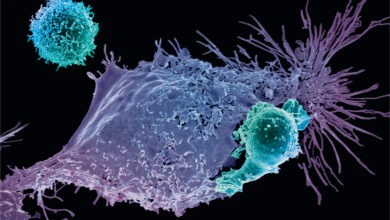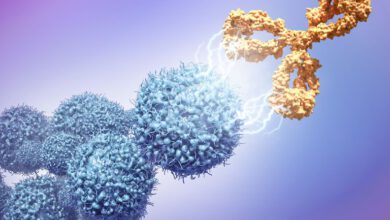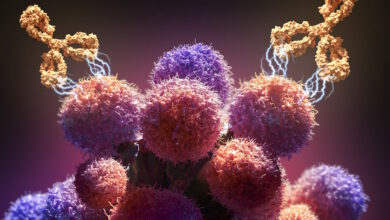Gene activity Can Provide Clues for Risk of Kidney Cancer Spreading


OCTOBER 17, 2022 – 4 MINUTES READ
The activity of four specific genes in the cancer cells seems to be able to predict the risk of the tumor spreading and the patient’s chances of survival as found by researchers from Karolinska Institutet (KI) based on a preclinical study published in Nature Communications.
Low survival rate
Clear cell kidney cancer is the most common form of kidney cancer in adults. If the tumor is confined to the kidneys, the prognosis is often favorable, but if it has spread to the skeleton, which occurs in about a third of patients, the five-year survival rate is only about 10%.
Immunotherapy known as checkpoint inhibitors have in recent years become an important treatment for patients with clear cell kidney cancer. But it is common for the cancer cells to develop resistance to the treatment, which may partly be attributed to factors in the environment around the cancer cells, the so-called tumor microenvironment.
In the current study, the researchers examined samples from nine patients with clear cell kidney cancer. The study is a collaboration between researchers at Karolinska Institutet, clinicians at Massachusetts General Hospital, where the patients were recruited, and computational scientists from Harvard Medical School in Boston, U.S.
“This could potentially become a tool to gain a better understanding of the course of the disease at an early stage. Patients with a cancer profile with a high probability of spreading could then be monitored more closely, to quickly detect and treat any growth of the tumor,” says Ninib Baryawno, senior researcher at the Department of Women’s and Children’s Health, Karolinska Institutet, and the study’s last author.
Tissue collection
Both tumor tissue and nearby normal kidney tissue were collected from the same patient to be able to make matched comparisons and control for inter-individual variation. The cells were studied by single-cell analysis; a sequencing technique that makes it possible to investigate each single cell in the tissue and the gene expression, that is, which genes are active, in individual cells.
In two patients, the researchers also compared primary tumor tissue from the kidney with tissue from skeletal metastases.
The study showed that a genetic signature consisting of four specific genes is predictive of whether the tumor will spread to the skeleton and of survival. Simultaneous overexpression of these genes (SAA1, SAA2, APOL1 and MET) suggests that the patient has a greater risk of developing a tumour that spreads and a poorer survival outcome.
The association of the gene signature to the risk of spreading was also confirmed when the researchers examined tumor cells from bone metastases in seven patients with metastatic clear cell kidney cancer.
Also, the study shows the microenvironment of the tumor inhibits the immune system, and the researchers suggest several possible targets for drugs that may be interesting to investigate further. These were identified with computer simulations of cell interactions.
The study provides important biological knowledge about the interaction between tumor cells and their microenvironment in clear cell kidney cancer, the researchers said.
Next steps
“We hope that our results will contribute to further investigations of factors that affect the tumor microenvironment, which can ultimately provide new ways to treat relapse and the spread of cancer. For us, the next step is to study how metastases in the bone marrow and the skeleton differ from the local tumor in the kidney but also how the bone marrow in patients with kidney cancer metastases in the skeleton differs from healthy bone marrow. We hope that it can help us answer the question as to why immunotherapy does not work in some kidney cancer patients,” said Adele Alchahin, PhD student at the Department of Women’s and Children’s Health, Karolinska Institutet, and one of the study’s first authors.
The research was funded through philanthropic donations by Bill and Cheryl Swanson, Gunther and Maggie Buerman as well as Robert Higginbotham. The research in Sweden was funded by the Swedish Cancer Society.





